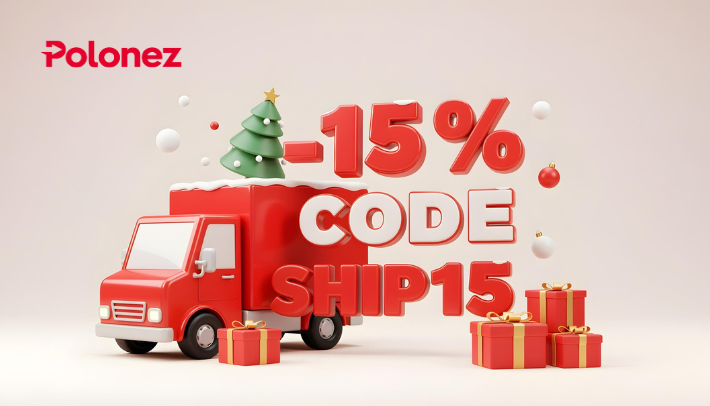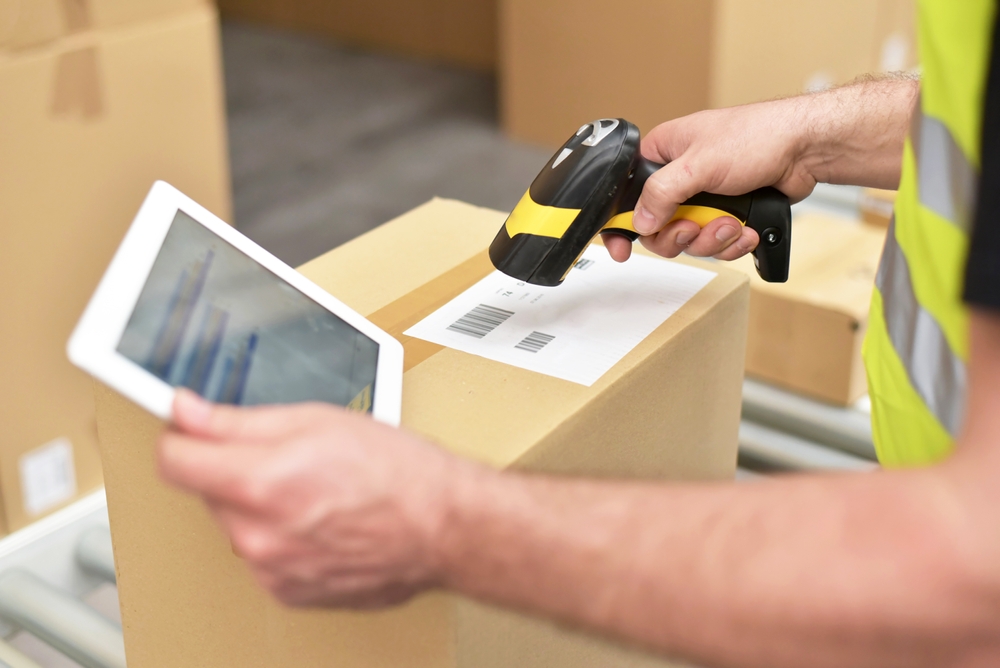Oct 13, 2025
The Power of Commercial Shipping to Poland and U.S. Trade

Commercial shipping to Poland is increasingly important for transatlantic trade, thanks to its strong ports and strategic location.
The Port of Gdańsk exemplifies this rapid growth. Over the past ten years, container traffic has shot up by 167 percent, positioning Gdańsk at the very heart of shipping in the Baltic.
Consequently, regular and direct shipping routes from the United States matter more than ever, as stronger Polish ports streamline the process for American companies sending goods across the Atlantic, offering shippers reliable lines, peace of mind, and new opportunities.
Unpacking Stability, Volume, and Commercial Shipping to Poland
The financial stability of the Polish logistics sector, which manages massive annual cargo flows exceeding 145.7 million tonnes in 2023, validates the scale of commercial shipping to Poland and confirms its robust volume.
A good illustration: the Port of Gdańsk alone made PLN 264 million in net profit in 2024, mostly due to its leading position in container handling, where it moved 2.05 million TEU containers last year. The high volume of bulk cargo, including fuel and raw materials, passing through the country ensures that big ocean carriers notice and frequently choose the Baltic route.
This results in more ships stopping in Poland weekly, right on schedule. This reliable, predictable traffic provides forwarders with a solid base to promise stable service to their clients, keeping the ports busy and trusted.
“The Poland Digital Freight & Logistics Platforms Market is valued at USD 36 billion, based on a five-year historical analysis,” according to Ken Research. “This growth is primarily driven by the increasing demand for efficient logistics solutions, the rapid rise of e-commerce, and advancements in technology such as automation, 5G-enabled tracking, and electric vehicle adoption that enhance supply chain visibility and operational efficiency. Strategic infrastructure investments and Poland’s role as a transit hub between East and West Europe further support market expansion.”
FCL: The Dedicated Service for Capital Goods
Big commercial clients executing their commercial shipping to Poland frequently use Full Container Load (FCL) for extensive or sensitive freight, requiring dedicated service. U.S. exports to Poland typically fall into this high-value category, encompassing items like giant gas turbines, oil products, high-tech parts, industrial robots, or advanced machine tools destined for new Polish factories.
Because these shipments need top-level security during the journey, FCL is the perfect solution: the container is sealed right at the start and remains sealed until it reaches Poland, ensuring nothing is opened along the way. This streamlined, secure approach is the best method for handling urgent or valuable deliveries safely and quickly.
Container size changes the price. Out of all options, 20-foot and 40-foot containers get used the most. What you put in a 20-foot box shapes the final bill. Type of goods matters too. If you pack things well, it saves space and money.
A 40-foot container can hold twice as much as a 20-footer. It costs only about a quarter more though. If you have lots to ship, the bigger container usually offers better value. That surprises many people planning their first big shipment.
“Container shipping rates and prices are determined by the form of the cargo, the mode of transport, the weight of your goods, and the distance and popularity of the delivery destination from the point of origin,” states Freightos. “Understanding the total cost of importing or exporting your goods is vital to determining the total landed cost of the goods and what your bottom line will be. Your total shipping cost includes components such as pickup from origin, export documentation, origin terminal handling, the ocean leg, import customs, destination terminal handling, and final delivery.”
LCL: Cost-Efficient Consolidation and Weight-Measure Mechanics
Recognizing the need for cost-efficient solutions for consumer goods and specialty foods, the LCL (Less than Container Load) “Ride Share” option remains the most accessible and ideal choice for small businesses involved in commercial shipping to Poland.
This approach lets several shipments travel together in the same container. As a result, expenses drop without the need to fill a whole container alone. LCL suits Poland's fast-growing online retail market, now worth $22 billion. This applies particularly to products like:
- Cocoa preparations.
- Processed meats and fish.
- Wood products.
- Additional high-value miscellaneous goods and items.
Accuracy matters most here. The weight-measure (W/M) method sets pricing rules. Forwarders owe clients honest details about how costs work. This method charges based on whichever is higher—weight or measure.
Clients can then pack smarter and avoid extra charges, utilizing:
- The cargo's gross weight (measured in metric tons).
- The cargo's cubic volume (measured in CBM).
Effectively managing transport remit allows enterprises to optimize internal transport resources, supporting more strategic and cost-effective logistics operations. This can significantly influence the structure and scale of transactional handling costs, ultimately affecting cargo pricing.
Moreover, transport remit decisions can offer considerable opportunities for additional revenue or cost savings, sometimes matching the importance of a firm’s core business activities.
“In broader terms, transport remit management can also contribute to national strategies aimed at expanding international trade,” states PLOS ONE, a peer-reviewed engineering and social science journal published by the Public Library of Science. “In Poland, a notable share of trade involves interactions with foreign entities, incorporating both imports and exports. This active international engagement holds the potential to influence the negotiation and establishment of terms related to transportation in these operations.”
Central 15 CBM Threshold and Commercial Shipping to Poland
Success in commercial shipping to Poland relies on measuring two core factors: shipment volume and logistical velocity.
Specifically, shipments crossing the 15 CBM line should sensibly shift to full container loads (FCL), as utilizing more space lowers cost and clarifies shipping plans, a rule smart freight companies use when advising customers. LCL services have advanced dramatically; shipping between the U.S. Northeast and Gdynia used to take nearly 50 days, but the new target is just 25 days. This is a massive leap achieved through weekly sailings and highly efficient container freight stations, where both sides work together to prevent delays.
Hitting that ambitious 25-day time frame relies heavily on smart U.S. operations, particularly in Chicago, which serves as a major hub where almost a quarter of all U.S. freight trains cross. Midwest manufacturers leverage Chicago as a launching pad, piling high-value cargo like machines, parts, and equipment.
It accumulates before it zipping through rail or road lines to New Jersey, creating a steady, affordable pipeline straight to the main East Coast shipping gate. This delivers on both speed and savings.
Infrastructure Investment and Long-Term Capacity
Polish ports, notably the Port of Gdynia, are projecting clear new growth for commercial shipping to Poland by moving ahead with major initiatives like the Outer Port project.
This effort, which is scheduled to deliver new deep-water docks around late 2028, demonstrates Poland's strong commitment to handling more global trade and its desire to remain a top shipping destination in Europe:
|
Port/Metric |
2023 Total Cargo (Mn Tonnes) |
2024 Container Volume (TEU) |
2023-2024 Container Growth |
Strategic Trend |
|
Gdańsk |
81.0 |
2.25M |
~10% |
Baltic Container Leader, High-Value General Cargo |
|
Gdynia |
29.4 |
13.06M (H1 2025 Tonnes) |
Decrease (H1 2025 Tonnes) |
Major Infrastructure Investment (Outer Port 2028/29) |
|
Polish Ports Total |
145.7 |
1.88M TEU (H1 2025) |
+20.72% (H1 2025 TEU) |
Increased Containerization and Export of Value-Added Goods |
Operational Control, Consolidation, and Diaspora Volume
Centralizing operational control at the Port Reading, New Jersey headquarters is key for effective commercial shipping to Poland. This single site checks cargo quality and ensures containers are packed to their maximum capacity. These high fill rates are necessary for keeping prices low and sailings frequent.
Furthermore, strong Polish-American ties ensure steady business, as community-rooted companies handle both personal items (like cars, household goods, and cargo for new immigrants) and business shipments every week. This consistent, reliable stream of volume ensures that containers leave stuffed and on time, week after week, maintaining reliability even when companies change hands.
As they near the final destination, forwarders executing commercial shipping to Poland operations must efficiently manage two significant and highly specific risks: geopolitical volatility and strict regulatory compliance. They need to handle delays well. Damage to goods can happen fast.
Quick decisions matter a lot, where each mistake can hit the business hard. Reliable communication keeps surprises low, and every step counts on this long route:
- Geopolitical Risk: The route traverses the Baltic Sea, a region of increased geopolitical sensitivity. Increased military vigilance, exemplified by NATO’s "Baltic Sentry" activity, always leads to higher maritime insurance premiums and implicit Operational Security Surcharges.
- Regulatory Risk: Strict regulatory compliance is required for all EU commercial shipments.
To manage the second risk, meticulous documentation is necessary. Every shipment requires:
- The critical HS (Harmonized System) Code.
- The full VAT, ID, and EORI numbers.
Many Polish companies shy away from handling complicated import logistics, and that’s where smart forwarders step in to help out with tailored services. This builds trust with clients and makes higher prices easier to accept.
Polonez America
Polonez America specializes in international shipments from the United States to 43 European countries and specifically commercial shipping to Poland. We offer parcel shipment via ocean or air, vehicle shipment, commercial LCL (Less than Container Load) and FCL (Full Container Load) shipping.
Our comprehensive range of services means customers can initiate package or commercial shipments from any of Polonez's authorized shipping outlets within the United States, which are then transported to our headquarters for sorting. Customers can send packages from authorized shipping outlets in the United States or by sending them via UPS, FedEx, or U.S. Postal Service to Polonez America's headquarters in Port Reading, NJ.
Polonez America is your expert in the resettlement process, collaborating with European partners for parcel services, customs, and delivery within Poland and other countries. We earn client trust through integrity and professionalism by delivering the highest quality service at the most competitive price.
Recommended to you

News
Dec 2, 2025
Don’t Miss Christmas Delivery!
CHRISTMAS IS JUST AROUND THE CORNER. There’s still time to send your holiday parcels to Poland — but the shipping deadlines are approaching quickly!

News
Dec 1, 2025
15% OFF Online Shipments
December Holiday Promo

News
Nov 24, 2025
How the Middle Warehouse Ensures Quick Delivery to Poland
U.S. online shops are reaching more buyers in Europe every year thanks to quick delivery to Poland and other countries.




